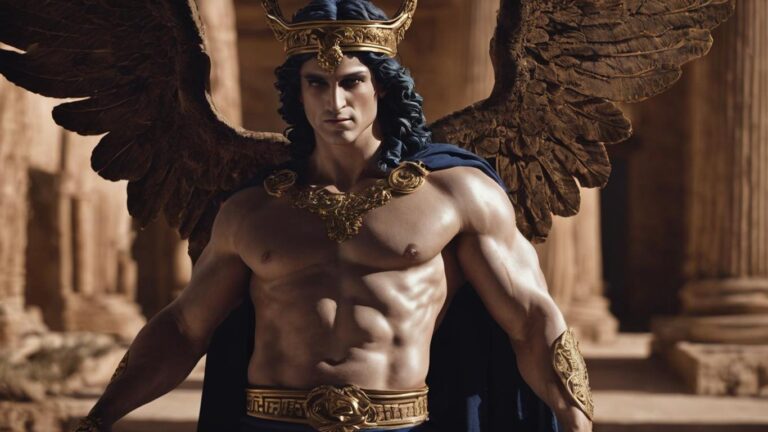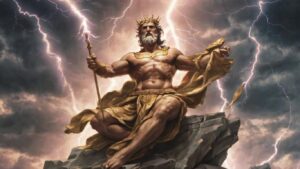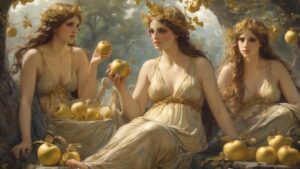Table of Contents
In the vast realm of Greek mythology, the benevolent god Hypnos, ruler of sleep, shares a divine lineage with his twin brother Thanatos. Born to Nyx, the goddess of the Night, and Erebus, the god of darkness, their origins are shrouded in mystique. Legends vary about Hypnos’s dwelling, with some describing a subterranean cave in the underworld adorned with opiate blooms, while others place it beneath the Greek isle of Lemnos, intersected by the river of forgetfulness.
The tapestry of Hypnos’s narratives unfolds in cunning exploits, as recounted in Homer’s Iliad. At Hera’s request, Hypnos outwits Zeus, the supreme deity, to aid in Hera’s schemes against Heracles. The mighty Heracles, Zeus’s mortal son, had razed Troy years before the war. Hera, seeking revenge, enlists Hypnos to veil Zeus in slumber, allowing storms to rage as Heracles sails homeward.
Intriguingly, Hera calls upon Hypnos once more during the Trojan War, seeking to tip the scales in favor of the Greeks. Initially hesitant, Hypnos agrees only when promised Pasithea as his bride. Enchanting Zeus, Hypnos casts him into a deep slumber, transforming into a bird to inform Poseidon of Zeus’s vulnerability.
Informed by Hypnos, Poseidon aids the Greeks, turning the tide of war in their favor. Zeus, unaware in divine repose, remains oblivious to Hera and Hypnos’s intricate dance. The myths surrounding Hypnos paint a vivid picture of deception and manipulation orchestrated by Hera, fueled by spite and strategy. The god of sleep, a master of artifice, navigates divine politics, leaving Zeus unaware of the intricate orchestration.
As these tales endure through time, Hypnos stands as a master orchestrator in the celestial ballet of gods and myths. His exploits, showcase the unpredictable dynamics within the pantheon, where dreams and schemes intertwine in the eternal dance of divine intrigue.
Appearance

In artistic renderings, Hypnos emanates tranquility, embodying the essence of sleep and repose. His calm and serene countenance defines him as a deity of tranquil nights.
Swift and silent, wings grace some depictions of Hypnos, symbolic of his ability to swiftly deliver sleep to gods and mortals alike. These wings, an emblem of his silent nocturnal presence, carry the promise of serene dreams.
Amidst the imagery, poppies intertwine with Hypnos, reinforcing the ancient Greek connection between these flowers and the realms of sleep and dreams. Held or encircling him, poppies accentuate his role in guiding mortals through the realm of slumber.
Reclining in relaxation, Hypnos assumes a posture that reinforces the concept of rest. It is a visual cue to all who behold him, an invitation to the tranquility he governs, where the world succumbs to the embrace of peaceful sleep.
Whether perceived as divine or approachable, Hypnos seamlessly merges mortal and godly attributes. In various contexts, he morphs, at times distant and ethereal, at others, embracing a more human semblance. This fluidity in his portrayal adds depth to the enigma of the god of sleep.
Family
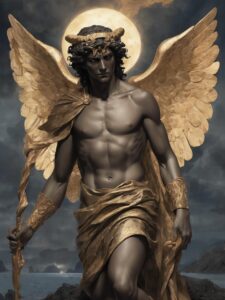
Hypnos, god of sleep, married Pasithea, the grace goddess, in a divine union of tranquility. Together, they parented three children: Morpheus, Phobetor, and Phantasos.
Morpheus, the eldest, shaped dreams with artistic brilliance. His visions mirrored reality seamlessly. Moreover, Phobetor, the second, wove nightmares, conjuring fears into the sleeping minds. Meanwhile, Phantasos, the youngest, crafted surreal dreams, a realm where reality and fantasy danced.
Pasithea, serene and graceful, complemented Hypnos’s somber nature. Not only did their union bring harmony to the divine realm, but the god of sleep, with his gentle consort, also presided over a realm of slumber and reverie.
In the celestial abode, Hypnos and Pasithea’s family thrived. Morpheus painted dreams with vibrant hues, while Phobetor cast shadows of fear. Phantasos, in his whimsy, blurred the lines between the tangible and the fantastical.
As a family, they embodied the delicate balance between restful sleep and the kaleidoscope of dreams. Furthermore, the divine couple, Hypnos and Pasithea, guided their children in shaping the nocturnal landscapes that unfolded in the minds of mortals.
Through their familial bond, the god of sleep found solace and purpose. Moreover, the grace goddess, in turn, added elegance to the tranquil realm they coalesced. In the cosmic tapestry, the family of Hypnos became custodians of the ethereal realm that flourished in the embrace of the night.
Modern culture
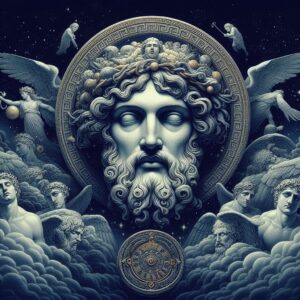
Literature:
In Rick Riordan’s “Percy Jackson & the Olympians” series, Hypnos is mentioned as a minor character. His son, Morpheus, plays a role in shaping dreams.
Art and Classical Paintings:
Numerous artists have depicted Hypnos in classical paintings, capturing the essence of sleep and dreams. These artworks can be found in museums and art collections worldwide.
Psychology:
The term “Hypnosis” derives from Hypnos, reflecting the altered state of consciousness associated with sleep. While not directly related to the god, the connection is linguistically rooted.
Film and Television:
In the movie “Inception,” directed by Christopher Nolan, the concept of dreams and their manipulation bears a resemblance to the realm controlled by Hypnos and his sons.
Video Games:
Hypnos and his family are sometimes referenced or incorporated into video games that draw inspiration from Greek mythology. Games like “God of War” feature characters inspired by Greek gods, although Hypnos may not be explicitly mentioned.
Music:
Some musicians draw inspiration from Greek mythology, and references to Hypnos can be found in song lyrics or album artwork. It may not be overt, but subtle nods to the god of sleep can be discovered.
Fashion and Brands:
Designers and brands occasionally draw inspiration from mythology. Imagery related to sleep or dreams, influenced by Hypnos, may appear in clothing lines, accessories, or brand logos.
Literary Retellings:
Modern retellings of Greek myths or fantasy novels often incorporate Hypnos and his family. Authors may reinterpret these characters in unique and contemporary ways.
While not as prominently featured as major gods like Zeus or Athena, Hypnos and his influence on the realm of sleep continue to weave through the cultural fabric, subtly influencing various aspects of modern storytelling and creativity.
FAQ
What is Hypnos' family background?
Hypnos is the son of Nyx (the night) and Erebus (darkness). He is also the twin brother of Thanatos, the god of death.
Does Hypnos have a consort?
Yes, Hypnos is married to Pasithea, the grace goddess. Together, they parented several children, including Morpheus, Phobetor, and Phantasos.
What are the responsibilities of Hypnos?
Hypnos is primarily responsible for inducing and regulating sleep. He ensures that both gods and mortals experience restful slumber.
Who are the children of Hypnos and Pasithea, and what are their roles?
Hypnos and Pasithea parented three notable children: Morpheus, who shapes dreams with artistic brilliance; Phobetor, who weaves nightmares and conjures fears; and Phantasos, who crafts surreal dreams blurring the lines between reality and fantasy.
How is Hypnos depicted in art and mythology?
In art, Hypnos is often portrayed as a serene and gentle deity. He may be shown with wings, symbolizing his ability to move swiftly, and he is sometimes accompanied by poppies, which were associated with sleep in ancient Greece.
Is there a connection between Hypnos and dreams?
Yes, Hypnos is closely associated with dreams. His son Morpheus is particularly responsible for shaping and delivering dreams to mortals.
Are there any famous myths involving Hypnos?
One notable myth involves Hypnos putting Zeus to sleep so that Hera could carry out her plans without interference.
How was Hypnos worshiped in ancient Greece?
Worship of Hypnos was not as widespread as some other gods, but he had sanctuaries and cults in certain regions. People would offer prayers and sacrifices to seek peaceful and restful sleep.
